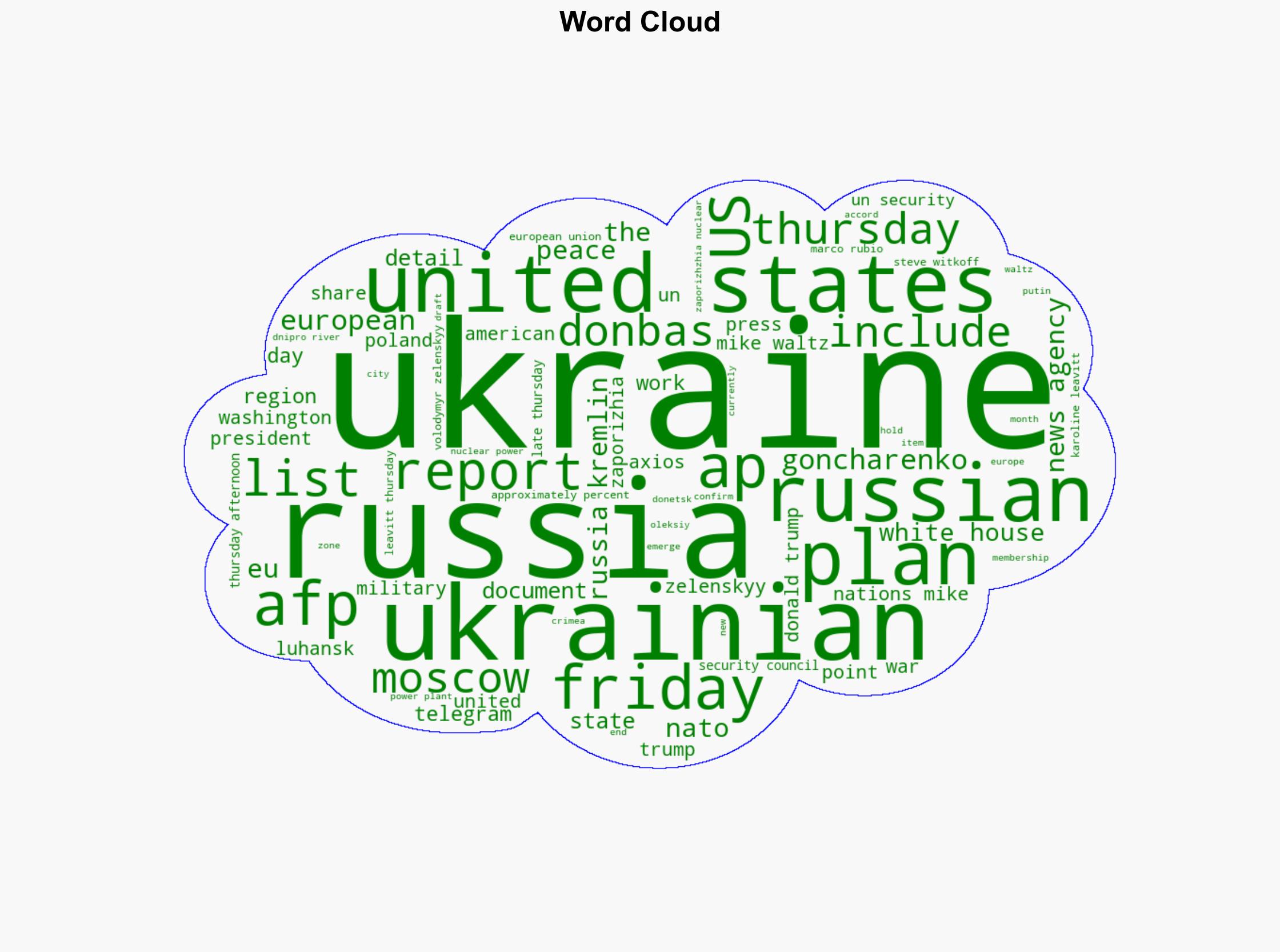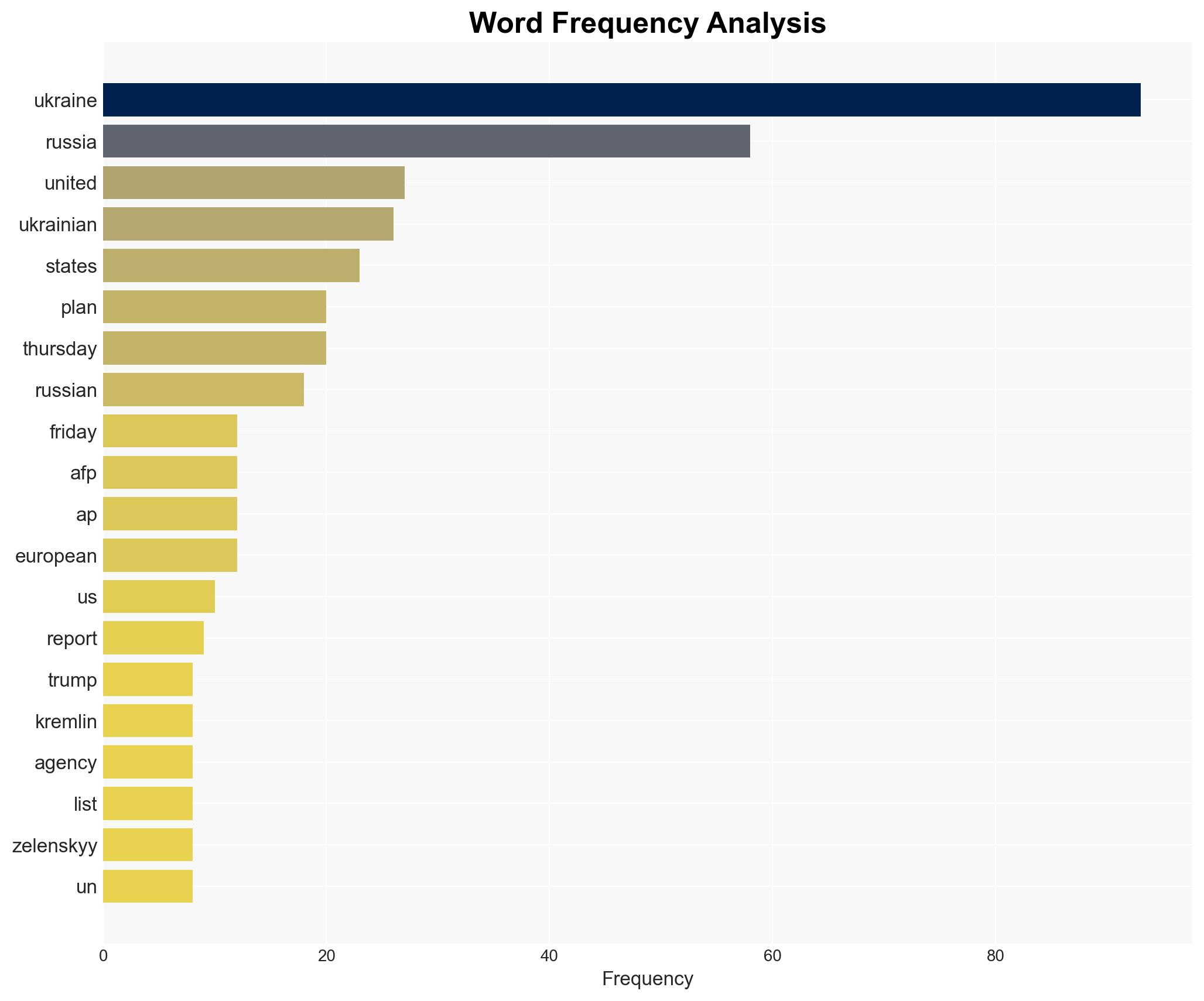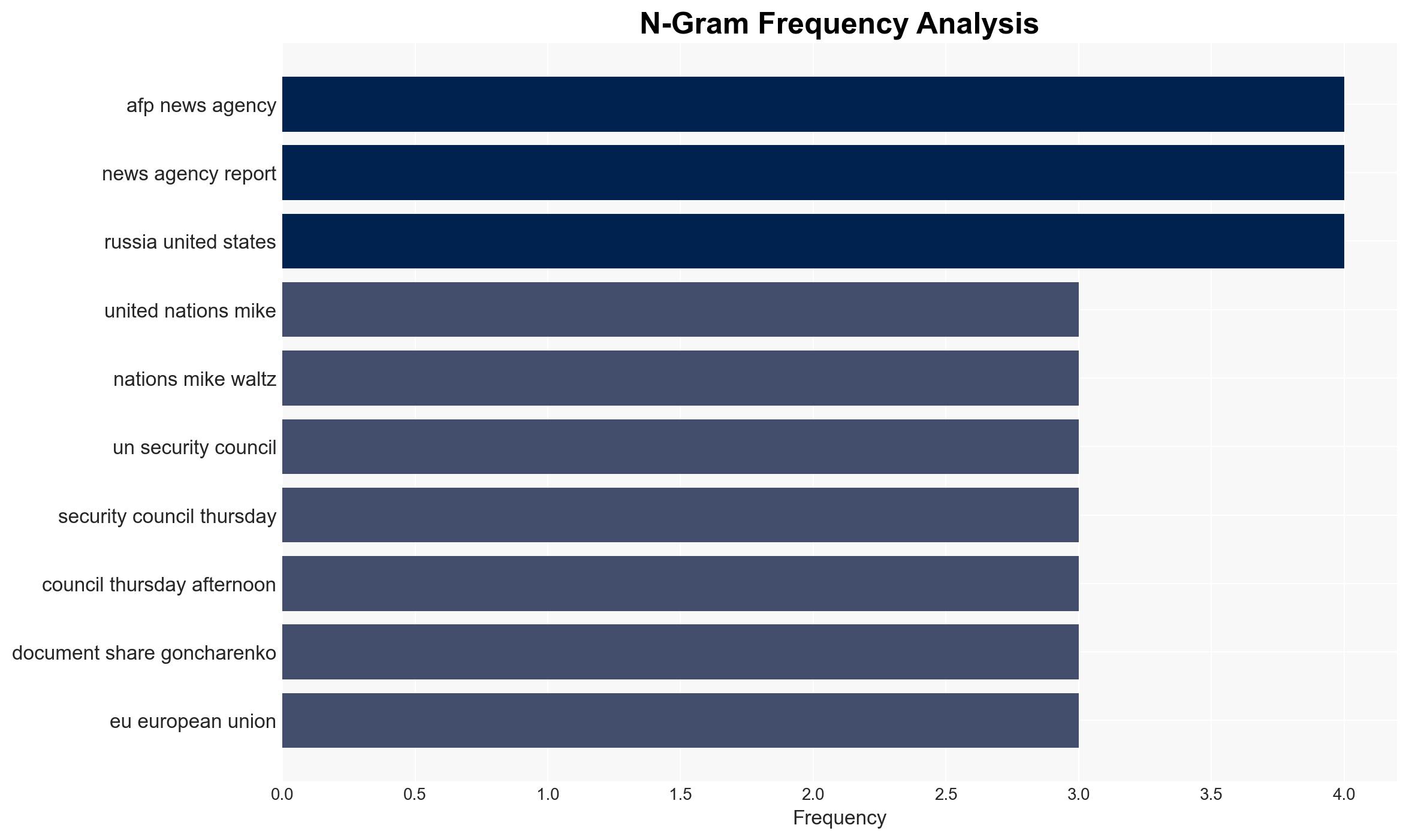More details of US plan for Ukraine emerge sees territory ceded to Russia – Al Jazeera English
Published on: 2025-11-21
AI-powered OSINT brief from verified open sources. Automated NLP signal extraction with human verification. See our Methodology and Why WorldWideWatchers.
Intelligence Report:
1. BLUF (Bottom Line Up Front)
There is a moderate confidence level that the US-backed peace plan for Ukraine, which reportedly involves ceding territory to Russia, is primarily a strategic maneuver to test diplomatic waters and gauge international reactions. The most supported hypothesis is that this plan is a negotiation tactic rather than a finalized proposal. Recommended action includes diplomatic engagement with European allies and Ukraine to ensure alignment and prevent unilateral concessions that could destabilize the region.
2. Competing Hypotheses
Hypothesis 1: The US plan is a genuine proposal aimed at ending the conflict by ceding Ukrainian territory to Russia in exchange for peace and economic incentives.
Hypothesis 2: The plan is a strategic negotiation tactic to pressure Russia into more favorable terms for Ukraine and test international responses.
Hypothesis 2 is more likely due to the lack of official publication, potential backlash from European allies, and Ukraine’s constitutional stance against territorial concessions. The US may be leveraging this plan to explore diplomatic avenues and assess Russia’s willingness to negotiate.
3. Key Assumptions and Red Flags
Assumptions include the belief that the US would not unilaterally impose a plan without consulting Ukraine and European allies. A red flag is the heavy reliance on media reports and unofficial documents, which may be subject to misinformation or misinterpretation. The absence of official confirmation from the US government raises the possibility of deception or strategic leaks to influence public opinion.
4. Implications and Strategic Risks
The plan’s perceived favoritism towards Russia could lead to political backlash in Ukraine and among European allies, potentially weakening the US’s diplomatic standing. There is a risk of escalation if Russia perceives the plan as a sign of weakness or if Ukraine and its allies reject the proposal outright. Economic implications include potential shifts in energy infrastructure control and sanctions relief.
5. Recommendations and Outlook
- Engage in diplomatic discussions with Ukraine and European allies to ensure a unified approach and prevent unilateral actions.
- Monitor Russian responses and prepare contingency plans for potential escalations.
- Best-case scenario: The plan catalyzes constructive negotiations leading to a peaceful resolution.
- Worst-case scenario: The plan is rejected, leading to increased tensions and potential military escalation.
- Most-likely scenario: The plan serves as a catalyst for further diplomatic engagement without immediate resolution.
6. Key Individuals and Entities
Volodymyr Zelenskyy, Donald Trump, Mike Waltz, Oleksiy Goncharenko.
7. Thematic Tags
Regional Focus, Regional Focus: Eastern Europe, US-Russia Relations, Ukraine Conflict
Structured Analytic Techniques Applied
- Causal Layered Analysis (CLA): Analyze events across surface happenings, systems, worldviews, and myths.
- Cross-Impact Simulation: Model ripple effects across neighboring states, conflicts, or economic dependencies.
- Scenario Generation: Explore divergent futures under varying assumptions to identify plausible paths.
Explore more:
Regional Focus Briefs ·
Daily Summary ·
Support us





